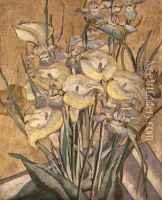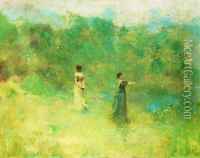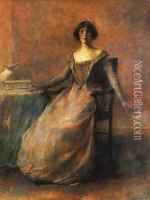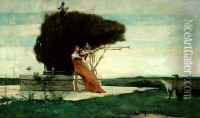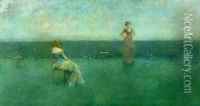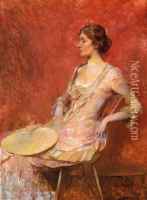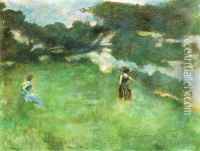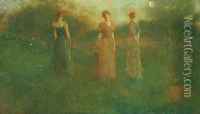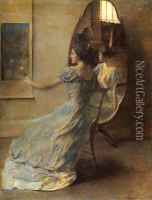Thomas Wilmer Dewing Paintings
Thomas Wilmer Dewing was an American painter working at the turn of the 20th century. He is best known for his tonalist paintings, a style that emphasizes atmosphere and shadow. Dewing was born in Boston, Massachusetts, in 1851. He began his artistic education at an early age, showing considerable talent which led him to continue his studies in Paris at the Académie Julian under the tutelage of Gustave Boulanger and Jules Lefebvre, two prominent French artists of the time.
During his time in Paris, Dewing was influenced by the aesthetic movement and the work of Whistler, which would play a significant role in the development of his unique style. His work often featured ethereal, elegant women in domestic or contemplative settings, imbued with a sense of calm and introspective mood. These figures were typically set against a harmonious, softly painted background which further emphasized their dreamlike quality.
After returning to the United States, Dewing became associated with a group of artists known as the Ten American Painters, or 'The Ten', who rebelled against the strictures of the academic painting of the time and exhibited their work independently. Dewing's work continued to evolve, with an increasing focus on the interplay of color and light, and the subtle gradation of tones.
Dewing's paintings were well received, and his works are part of major museum collections, including the Metropolitan Museum of Art and the Smithsonian American Art Museum. He remained active in the art world throughout his life, contributing to the development of American art in the late 19th and early 20th centuries. Thomas Wilmer Dewing died in 1938, leaving behind a legacy as a master of tonalist painting and an influential figure in American art.

